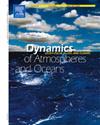重新考察东太平洋和中太平洋El Niño对华南地区晚秋至冬季降水的差异影响
IF 1.9
4区 地球科学
Q2 GEOCHEMISTRY & GEOPHYSICS
引用次数: 0
摘要
尽管对东太平洋(EP)和中太平洋(CP) El Niño期间中国降水异常进行了深入研究,但CP El Niño事件对华南冬季降水的影响仍存在争议。在冬季半年中,华南降水在深秋至冬季(NDJ的11月、12月和1月)达到高峰。这些促使我们重新审视EP和CP El Niño事件期间中国南方的NDJ降水异常。结果表明,两种El Niño事件均显著增加了降水。然而,降水异常的空间格局和强度存在差异。EP El Niño事件期间,华南地区出现了较大的正降水异常。CP El Niño事件期间,降水异常较小,主要出现在华南西南-东北内陆地区。这些差异源于赤道太平洋与El Niño有关的暖海表温度(SST)异常的不同位置和强度。CP El Niño期间的海温异常比EP El Niño期间的海温异常更偏西且更弱。菲律宾群岛以东或上空的一对异常反气旋和华南东北部的一对异常气旋将这些海温异常与华南降水联系起来。结果表明,CP El Niño与华南地区NDJ降水异常的相关性在不同时期存在显著差异。这可能解释了CP El Niño对华南降水影响的争议来源。本文章由计算机程序翻译,如有差异,请以英文原文为准。
Revisiting the differential impacts of Eastern‐Pacific and Central‐Pacific El Niño on late autumn to winter precipitation over South China
Although intensive studies examined the precipitation anomalies in China during the Eastern-Pacific (EP) and Central-Pacific (CP) El Niño, the impact of the CP El Niño event on winter precipitation in South China remains controversial. Besides, precipitation in South China peaks from late autumn to winter (November, December, and January, NDJ) during the winter half-year. These motivate us to revisit NDJ precipitation anomalies in South China during the EP and CP El Niño events. Results show that significantly increased precipitation is observed during both types of El Niño events. However, the spatial patterns and intensities of the precipitation anomalies differ. During the EP El Niño event, large positive precipitation anomalies appear throughout South China. In contrast, during the CP El Niño event, much smaller precipitation anomalies occur primarily in the southwest-to-northeast inland region of South China. These differences originate from the varying locations and intensities of warm sea surface temperature (SST) anomalies in the equatorial Pacific related to El Niño. The SST anomalies during the CP El Niño are located farther west and weaker than during the EP El Niño. A pair of an anomalous anticyclone east of or over the Philippine Islands and an anomalous cyclone northeast of South China connect these SST anomalies to precipitation in South China. We demonstrate that the correlations between CP El Niño and NDJ precipitation anomalies in South China vary remarkably across different periods. This may explain the source of controversy regarding the impact of the CP El Niño on precipitation in South China.
求助全文
通过发布文献求助,成功后即可免费获取论文全文。
去求助
来源期刊

Dynamics of Atmospheres and Oceans
地学-地球化学与地球物理
CiteScore
3.10
自引率
5.90%
发文量
43
审稿时长
>12 weeks
期刊介绍:
Dynamics of Atmospheres and Oceans is an international journal for research related to the dynamical and physical processes governing atmospheres, oceans and climate.
Authors are invited to submit articles, short contributions or scholarly reviews in the following areas:
•Dynamic meteorology
•Physical oceanography
•Geophysical fluid dynamics
•Climate variability and climate change
•Atmosphere-ocean-biosphere-cryosphere interactions
•Prediction and predictability
•Scale interactions
Papers of theoretical, computational, experimental and observational investigations are invited, particularly those that explore the fundamental nature - or bring together the interdisciplinary and multidisciplinary aspects - of dynamical and physical processes at all scales. Papers that explore air-sea interactions and the coupling between atmospheres, oceans, and other components of the climate system are particularly welcome.
 求助内容:
求助内容: 应助结果提醒方式:
应助结果提醒方式:


